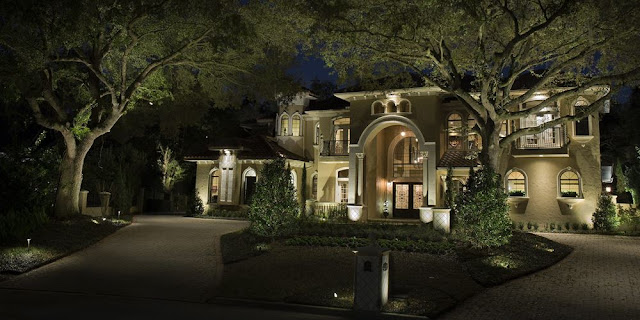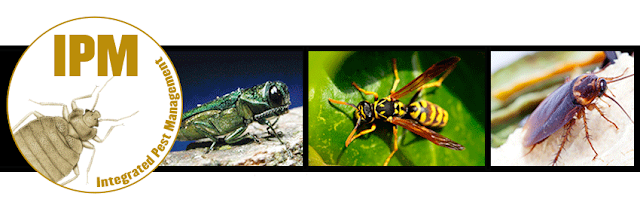Xeriscaping: A Guide to Water Conservation in Landscapes
Xeriscaping
A Guide to Water
Conservation in Landscapes
What is Xeriscaping?
Xeriscaping is defined as a
style of landscaping or gardening that promotes the ecological conservation
of natural resources through water-smart design principles.
|
Xeriscaping Benefits
Xeriscaping serves a significant role in determining the
environmental sustainability of a landscape and demonstrates synergetic
advantages to both human and wildlife communities:
- Increases water conservation (50–75%).
- Decreases maintenance, labour and cost.
- Decreases soil erosivity and erodibility.
- Increases soil infiltration, percolation and aeration.
- Minimizes or eliminates fertilizers and pesticides.
- Reduces carbon emissions, chemical pollution and contaminants.
- Provides wildlife resources for beneficial organisms.
- Increases property value (10–25%).
Xeriscape Design
Figure
1. The Xeriscape Demonstration Garden at
Denver Water Headquarters in Denver, Colorado. © Jeffery
Beall. 2015.
Xeriscape
design is established on the basis of seven ecological principles: i) water
conservation; ii) restricted turf areas; iii) efficient irrigation systems; iv)
soil improvement; v) mulching; vi) drought-tolerant species; and vii) low
maintenance. The following section contains ideas and concepts for implementing
these xeriscaping principles into an urban garden or landscape.
Water Conservation
|
Group
vegetation with similar watering requirements into specific hydrozones to increase
watering efficiency. Apply water in the morning when evaporation rates are
lowest. Study natural contours and drainage patterns to prevent precipitation
runoff and erosion.
|
Restricted Turf Areas
|
Eliminate or
reduce turf by only installing drought-tolerant mixes in areas with practical
functionality to increase water efficiency and reduce evapotranspiration (30
– 60%). Groundcovers, rockeries and tiered gardens can be implemented to
minimize turfgrass.
|
Efficient Irrigation Systems
|
Drip (syn. tube) irrigation is considered to be
the most efficient irrigation system in xeriscaping. Drip irrigation prevents
moisture stress by supplying a slow, steady supply of water on the soil
surface or directly into the root zone (2.0-8.0 L/hr) and provides
uniform moisture distribution in less surface area compared to other
irrigation systems (10–20%). Stormwater management can supplement irrigation via rain
barrels, cisterns or green roof systems.
|
Soil Improvement
|
Add soil amendments to improve soil structure,
infiltration, percolation and aeration. Soil amendments include sphagnum peat
moss¹, compost, green manure, casts, coir, rice hulls, biochar, calcined
clay, perlite, vermiculite and sand. Analyze soil texture, nutrient
composition and pH with testing kits. Aerate soil sparingly to facilitate gas
exchange. Do not cultivate soil during wet conditions. Do not overcultivate.
|
Mulching
|
Lay mulches around herbs, forbs, shrubs and trees. Mulches include wood, bark², needles, leaves, straw, stone and gravel. Organic and inorganic mulches should be incorporated at the appropriate depth (5.08–12.7 cm) as deep mulches can procure poor soil drainage. Organic mulches should be replenished every year to offset decomposition. Choose coarse-textured mulches over fine-textured mulches. Avoid mulches that have been painted or chemically treated. Do not use non-permeable landscape fabric or plastic as these materials prevent groundwater charge.
|
Drought-Tolerant Species
|
Incorporate
drought-tolerant species with defining characteristics (e.g. small, thick,
glossy, succulent, glaucous or pubescent leaves) or native species with
climate, insect and disease resistance. Small shrubs and herbs can reduce
pruning maintenance. Avoid monocultures to create biodiversity and decrease
pest virulence.
|
Low Maintenance
|
Proactive
maintenance includes judicious watering and fertilizing, replenishing
mulches, weeding, prohibiting shearing, fixing broken irrigation and mowing at
the appropriate height (5.08–6.57 cm).
|
For more information on how to start
your own xeriscaping project, check out Creating
the Prairie Xeriscape
(2013) by Sara Williams.
¹ – Sphagnum peat moss is considered an
unsustainable
soil amendment. Consider sustainable alternatives
such as compost, green manure, casts, biochar, coir or rice hulls.
² – Check out The Myth
of Pretty Mulch (2015) by Dr.
Linda Chalker-Scott to read about the negative apsects of using bark mulches in
landscaping applications.
-
When in doubt, contact a professional to ensure your garden is ready for any climate. Contact us for a horticulture consultation today!
Prairie West Landscapes
3541A 78 Ave SE
Calgary, AB T2C 1J7
(403) 252-6330
info@pwlscapes.com






Comments
Post a Comment